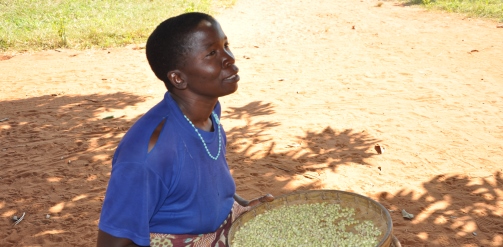On Africa Day, while the continent continues to face significant challenges in its fight against hunger and undernutrition (pdf), several African governments have increased their commitments in the fight against hunger and undernutrition. Launched today, the Global Hunger and Nutrition Commitment Index (HANCI-Global) and HANCI-Africa show that the Tanzanian and Sudanese Governments are putting in place important efforts addressing the situation.

Both Tanzania and Sudan have moved up the global index, overtaking ten and respectively nine other countries facing significant hunger and undernutrition challenges. Tanzania moved from ranking 19th to 9th amongst the 45 compared countries in the Global Index. Sudan, after years at the bottom, jumped from 44th to 35th position.
Importantly, these countries show improvements across a wide range of issues. The index measures 22 indicators, and Tanzania improved on eight of these, and Sudan on nine, since HANCI-Global 2014. Both countries have strengthened efforts to increase access to water and sanitation, strengthened pregnant women’s access to antenatal care, and improved birth registration rates of children. This is anticipated to set them onto pathways to make good progress.
Using HANCI to hold leaders to account
Tumaini Mikindo, Executive Director, Partnership for Nutrition in Tanzania (PANITA) said: ‘Much of Tanzania’s progress in HANCI-Global could be attributed to efforts by the governments led by the former President J. Kikwete’s and the current President John P. Magufuli’s. Both governments have crafted and implemented policies and strategies at national level, such as National Strategy for Growth and Poverty Reduction II (2010-2015), National Development Plan, National Nutrition Strategy (2011-2016) and National Multsectoral Nutrition Action Plan (2016-2021) in a drive to improve nutrition across the country.
‘From an advocacy perspective, PANITA and other NGOs have been able to use the index as a tool to demonstrate to their government the need to prioritise nutrition across sectors. This is exemplified by government pledge during World Bank Human Capital Summit held in November 2016; to allocate $115 million for the next five years’. Further to this, the government have acted on this commitment by allocating TZS11 billion for this financial year’.
Both HANCI-Global and HANCI-Africa aims to hold leaders to account on their efforts to tackle hunger and undernutrition reveals the nations taking the strongest action, as well as those that have the biggest improvements to make.
HANCI-Global compares 45 developing countries, and HANCI-Africa compares 45 African countries. It ranks their political commitment based on indicators split between commitment to hunger reduction and commitment to addressing undernutrition.
Commitment to reduce hunger and commitment to reduce undernutrition are measured separately because, for instance, measures to improve sanitation are critical for improving nutrition, though less clearly related to hunger. Conversely, emergency food aid, or subsidised food in ration shops can help to reduce acute hunger, but are often not aimed at achieving a balanced diet. By separating the measurement of political commitment from outcomes HANCI distinguishes it from other food security metrics and scorecards such as the Global Hunger Index.
How are countries doing in tackling hunger and undernutrition over time?
Dolf te Lintelo, Research Fellow, at IDS said: ‘Both HANCIs show that over time, country leaders need a coordinated, consistent approach across a range of areas that drive hunger and undernutrition reduction, rather than focusing improvements in just a few areas, even though these may be important first steps.’
Notably, at the top of HANCI-Global is Guatemala, leapfrogging Malawi and Peru from previous years. The top three is now entirely comprised of Latin American countries, with Brazil moving up to second rank overall.
At the top of HANCI-Africa, South Africa retains top spot, due to a stable performance. Malawi stayed in second place in the African index (last published in 2017) but dropped to 7th in the HANCI-Global. Since HANCI 2014 was produced, Malawi has given less attention to nutrition within national development policy, and has reduced spending on health and coverage of children with Vitamin A supplements, which is a clear explanation for its drop in the global index.
Egypt is new in the top three in HANCI-Africa, and has achieved near universal access to improved drinking water and high levels of sanitation coverage. However, while health spending increased, Egypt witnessed a significant drop in public spending on agriculture, raising questions for the future.
Another major improver in HANCI-Global is Pakistan, moving up 20 places from the last index. Pakistan’s rise is explained by significantly improved access and coverage of sanitation and by introducing a budget and policy targets solely focused on nutrition.
While Africa and Asia continue to bear the biggest burden in reducing hunger and undernutrition, commitments from countries like Tanzania, Sudan and Pakistan show that there are governments who are putting hunger and undernutrition at the centre of their policy and spending plans. Both HANCIs underline the necessity to invest, and plan across all sectors if governments are to truly fight food deprivation and malnourishment.